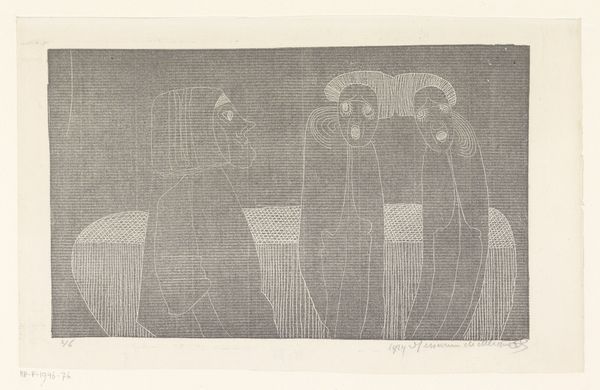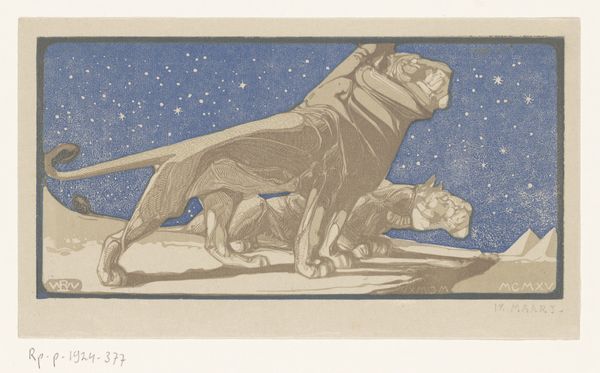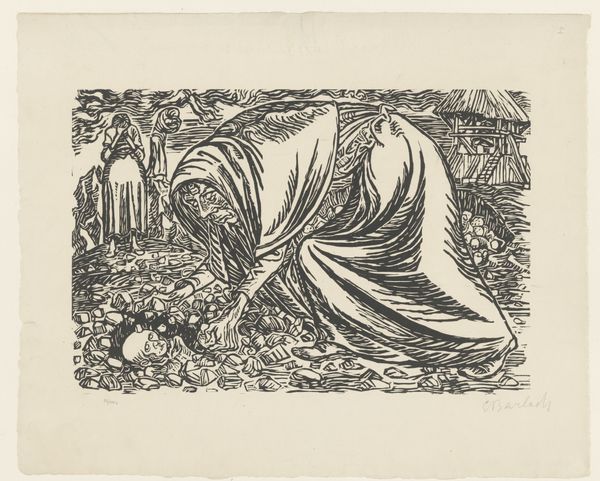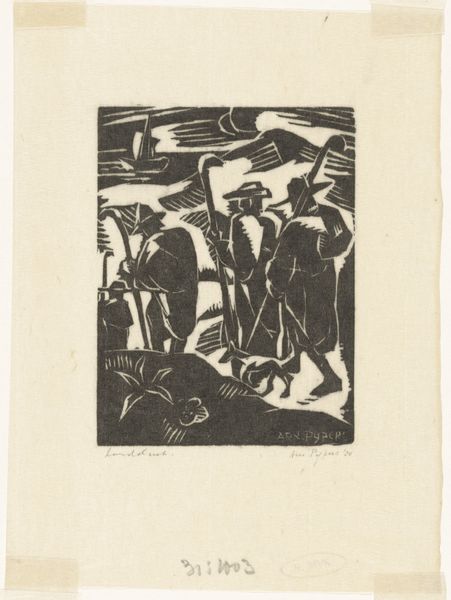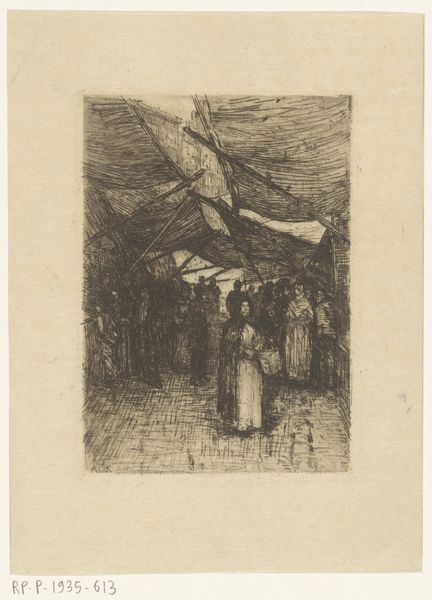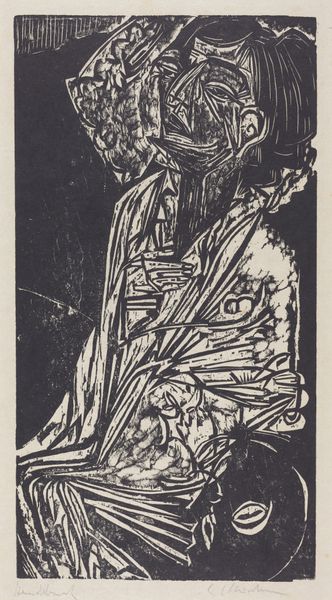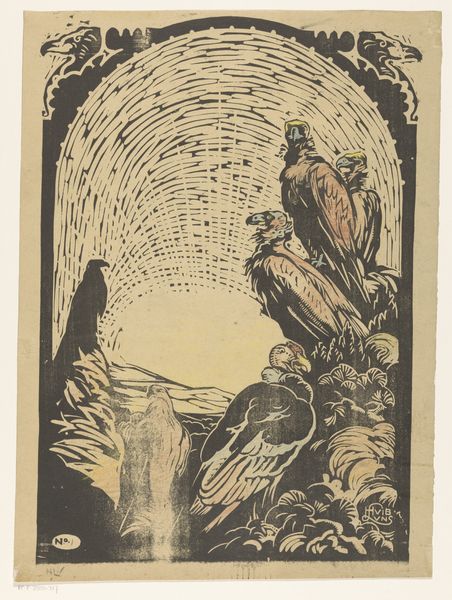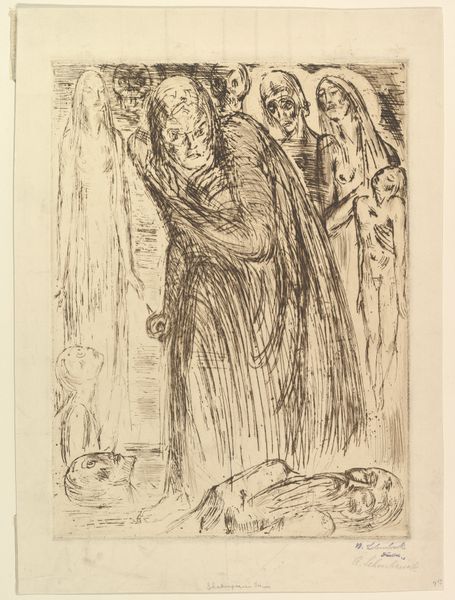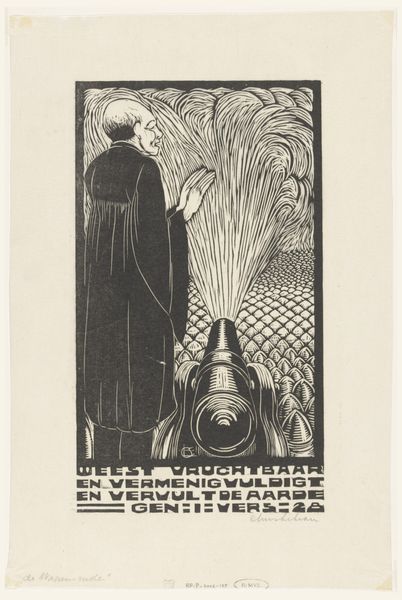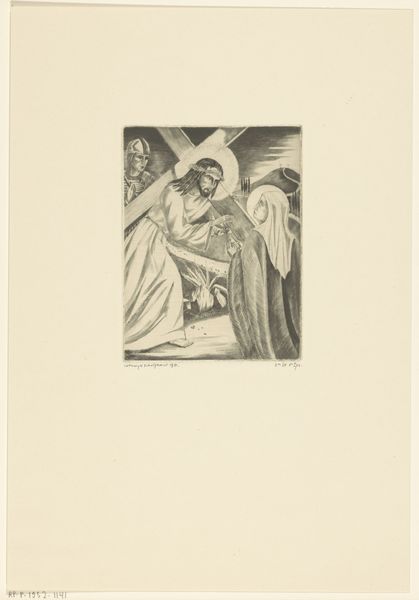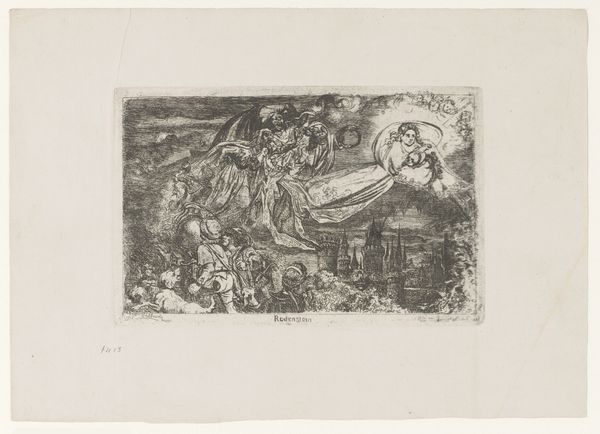
drawing, graphic-art, print, woodcut
#
drawing
#
graphic-art
# print
#
woodcut
#
symbolism
Dimensions: height 183 mm, width 243 mm
Copyright: Rijks Museum: Open Domain
Curator: Here at the Rijksmuseum, we’re fortunate to house "Gieren" which translates to "Vultures", a compelling woodcut by Bernard Willem Wierink created after 1918. Editor: It's striking. Stark, high-contrast black and white… it projects a feeling of grim solemnity. The posture of these creatures conveys a sense of dejection. Curator: Wierink’s work fits into the Symbolist movement, so it's ripe for decoding layers of meaning. Given the historical context—created post-World War I—can you speculate what ideas may have been in the artist’s scope? Editor: Considering vultures are birds of carrion, linked with death and cleansing, their downcast demeanor suggests collective grief after unimaginable human suffering. The starlit sky, traditionally associated with hope and destiny, adds a somber counterpoint…like lost souls. There is a constellation-like arrangement in the negative space here. Curator: And look closely at the details; at the feet that appear to merge with an undefined, unstable ground. I think it invites commentary on the shifting foundations of society post-war. The three are arranged like mourners, yes? Is this an invocation, a reckoning with mortality? Editor: There’s an interesting visual dichotomy. The creatures are simplified—almost skeletal, stylized forms—but their collective weight evokes an age-old, primal response to death. Wierink also is inviting us to accept this experience of decay, a crucial aspect of life. Curator: Exactly! His artistic choice invites contemplation. By imbuing vultures—often reviled creatures—with dignity, is he prompting empathy? Could it be about social hierarchies collapsing as people experienced similar hardships? Editor: Perhaps. This symbolism goes far beyond just visualizing grief. The stylized wings may denote protection while also confining. A subtle representation of being trapped in endless cycles. Thank you for sharing insights to appreciate what "Gieren" signifies beyond aesthetics. Curator: And thank you! Recognizing how his visual lexicon taps into deep-seated beliefs is the very core of understanding the print’s historical weight.
Comments
No comments
Be the first to comment and join the conversation on the ultimate creative platform.
